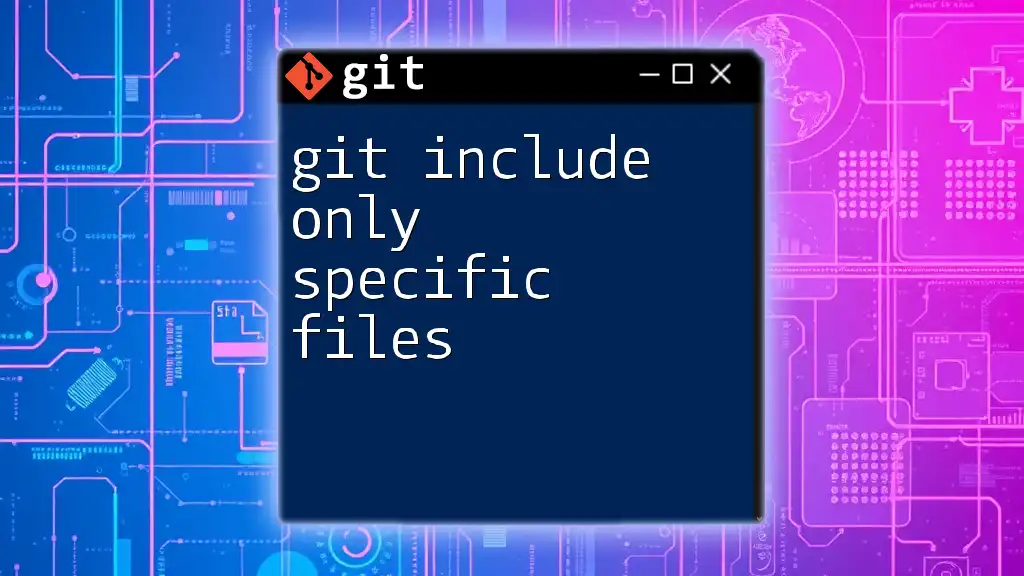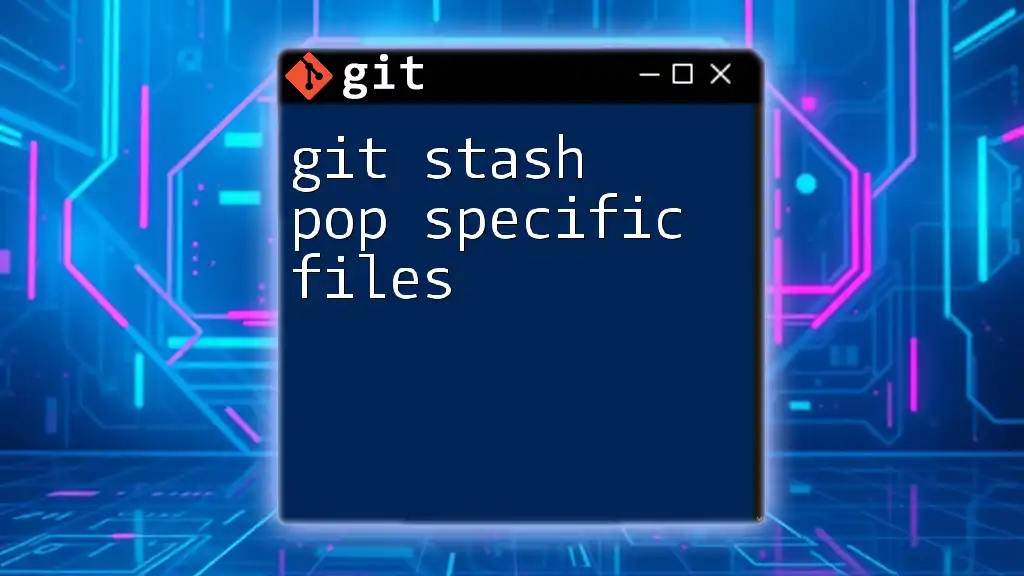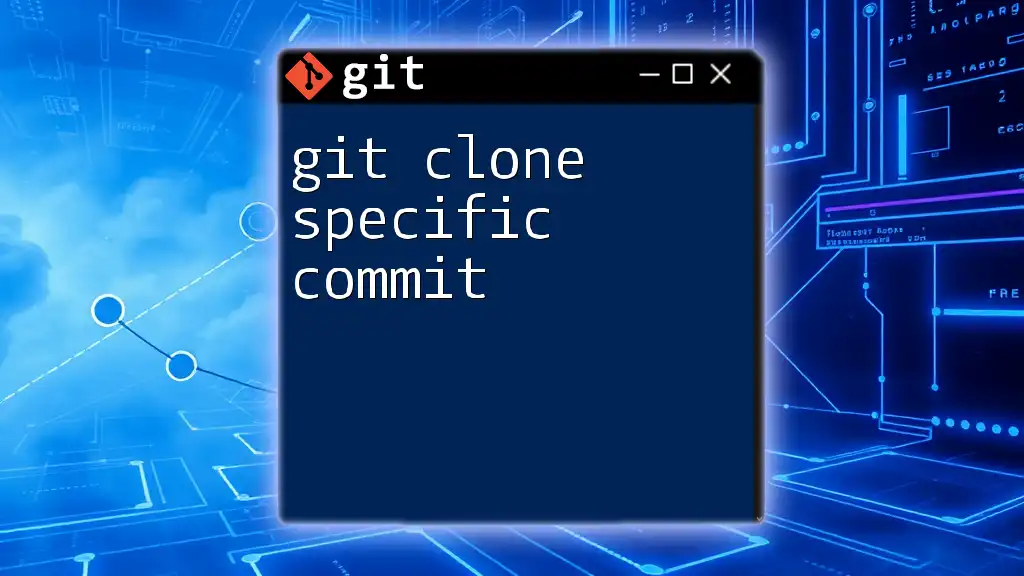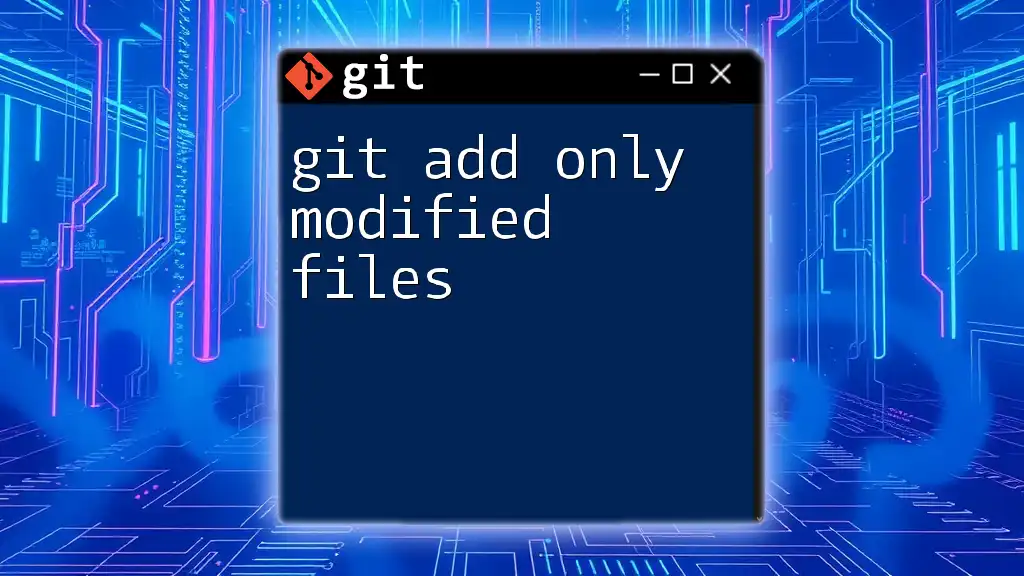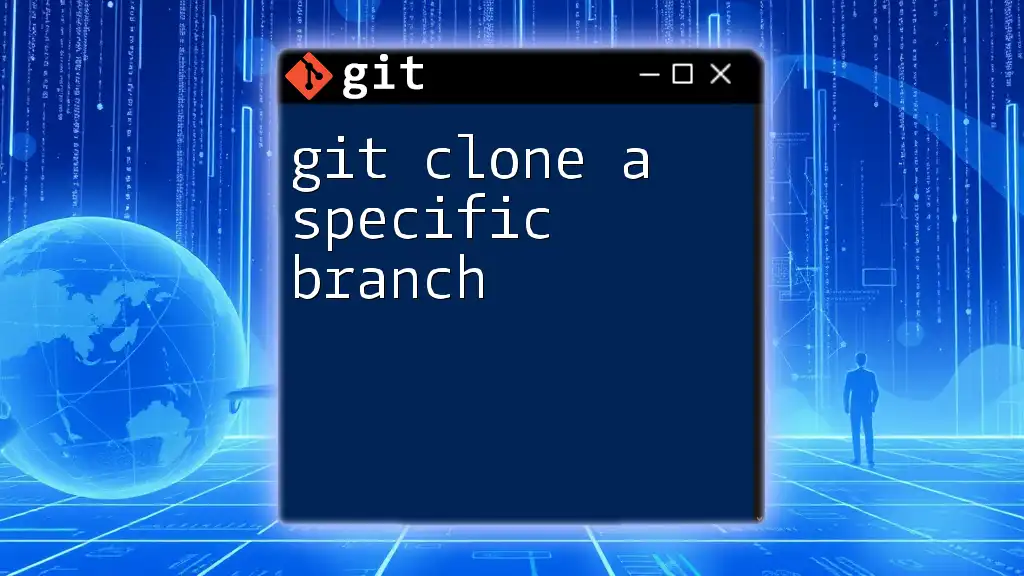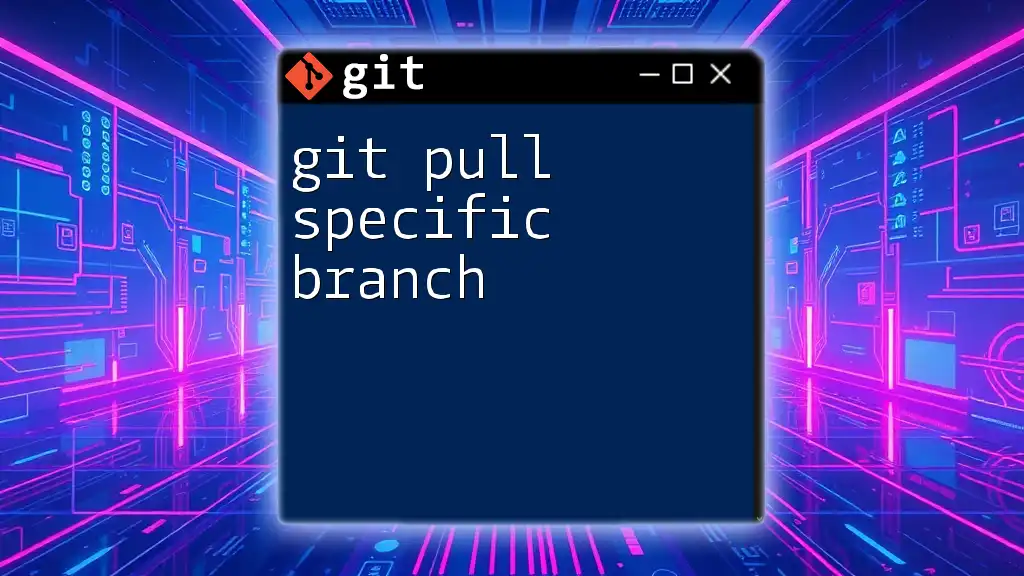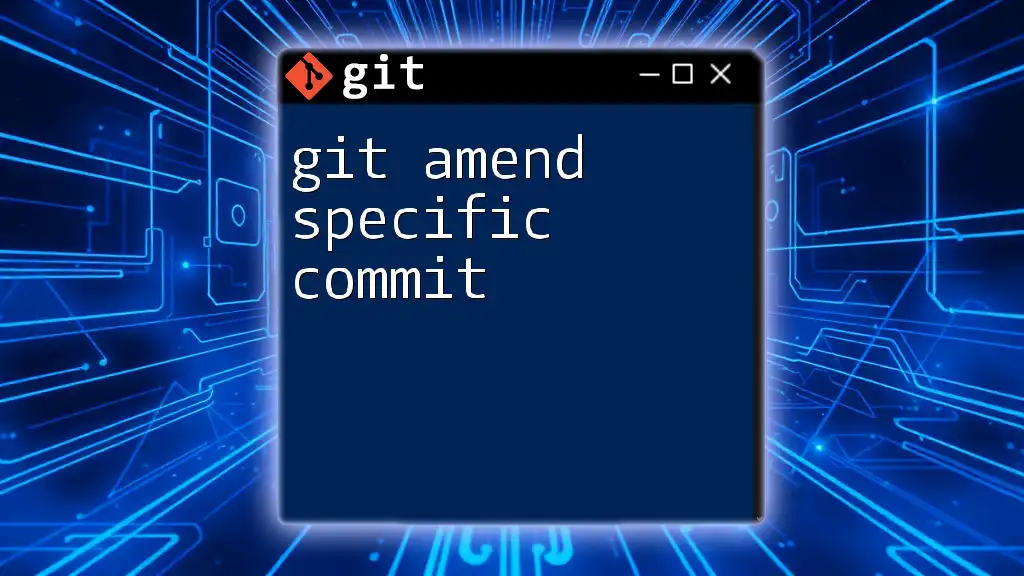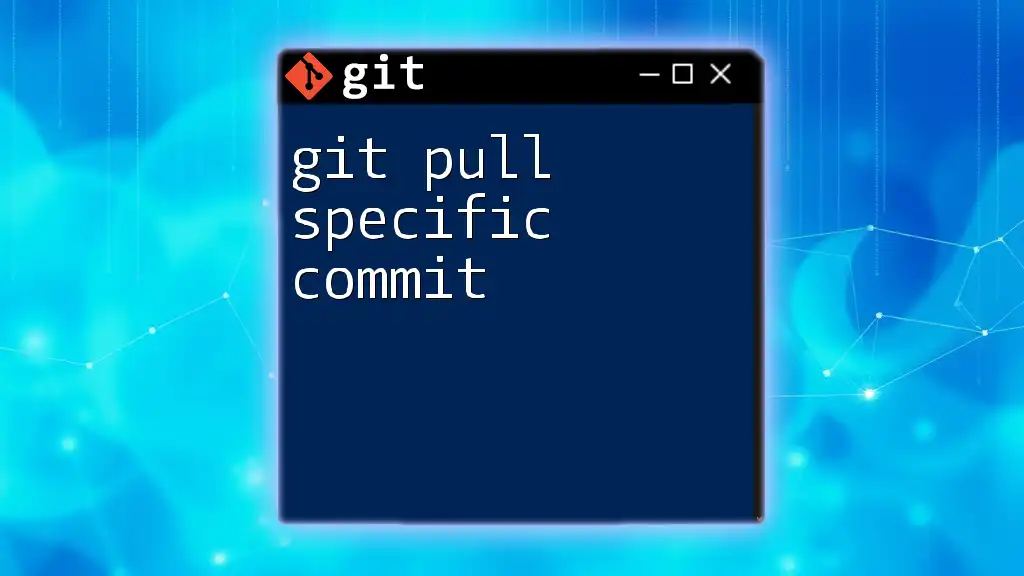To include only specific files in a Git commit, you can specify the filenames directly in the commit command.
git add filename1.txt filename2.txt
git commit -m "Commit only specific files"
Understanding Git Staging Area
What is the Staging Area?
In Git, the staging area (also known as the index) is a crucial space where you prepare files before committing them to the repository. It allows you to collect your changes, review them, and decide which ones should be included in your next commit.
How Staging Works
The flow of tracking changes in Git begins with modifying files in your working directory. To prepare these modified files for a commit, you need to stage them using the `git add` command. This step provides you with flexibility, as you can choose which files or changes to include, offering a finer level of control over your commit history.

Including Specific Files in Commits
Using `git add` Command
To include only specific files in a commit, you can utilize the `git add` command. The basic syntax is straightforward, allowing you to stage individual files or multiple files.
For example, to stage a single file:
git add path/to/your/file.txt
You can also stage multiple files at once:
git add file1.txt file2.txt
By explicitly specifying the file paths, you can effectively control what changes are committed to the repository.
Using Pathspecs to Include Specific Files
What are Pathspecs?
Pathspecs are a powerful feature in Git that allow you to refine your commands. They enable you to specify file patterns when including files, which can be incredibly useful for staging only certain types of files or excluding others.
Including Only Certain Types of Files
Using pathspecs, you can stage files of a specific type. For instance, if you want to stage only `.txt` files, you can do the following:
git add '*.txt'
Moreover, Git allows you to use negation to exclude certain files from staging. For example, if you want to include everything except `.log` files, you can use:
git add -- ':!*.log'
This level of specificity makes it easier to manage your commits, especially when dealing with diverse file types in a project.
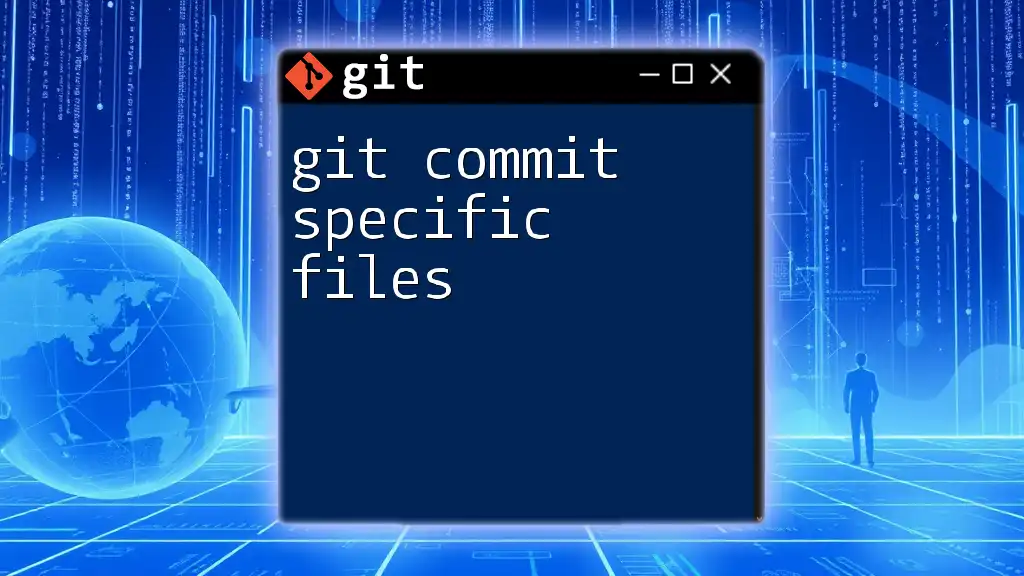
Advanced Techniques for Selecting Specific Files
Using Interactive Staging
What is Interactive Staging?
Interactive staging, facilitated by the `git add -p` command, allows you to choose which changes to stage at a line-by-line level. This is particularly beneficial when a file contains multiple changes, and you want to commit only a subset of those modifications.
Step-by-Step Guide
To use the interactive mode to include specific parts of files, simply run:
git add -p
This command presents you with a prompt for each diff, allowing you to review the changes. You can then choose to stage selected changes by responding with ‘y’ or skip them with ‘n’.
Staging Specific Files from a Directory
Using Command Line Wildcards
When dealing with multiple files in a directory, wildcards can simplify the staging process. For example, if you wish to stage all files within a particular directory, use:
git add dir/*
This command stages all files located in `dir`, enabling you to include multiple files in a single command without specifying each file individually.
Leveraging Git Aliases for Efficiency
Creating Useful Git Aliases
Git aliases can streamline your workflow by allowing you to create shortcuts for commonly used commands. This can be particularly useful when you frequently need to stage specific types of files.
Example Alias Creation
For instance, to create an alias for staging all `.txt` files, you can configure your Git environment with:
git config --global alias.stage-text 'add *.txt'
Once set, you can easily run `git stage-text` to execute the command, enhancing your productivity while working with Git.

Common Scenarios and Use Cases
Working with Large Projects
In large repositories, it's common to have numerous untracked and modified files. By selectively staging specific files, you can keep your commits focused and relevant. For example, if you're developing a feature and need to stage only those related changes, using `git add path/to/your/feature*` can help keep your commit history clean.
Managing Files in Branches
When switching branches, you might encounter situations where you need to include only certain changes while avoiding the rest. By selectively staging files, you can maintain a clear and organized branch history. This can be achieved using `git status` to inspect which changes are staged and `git add` to carefully select what to commit.
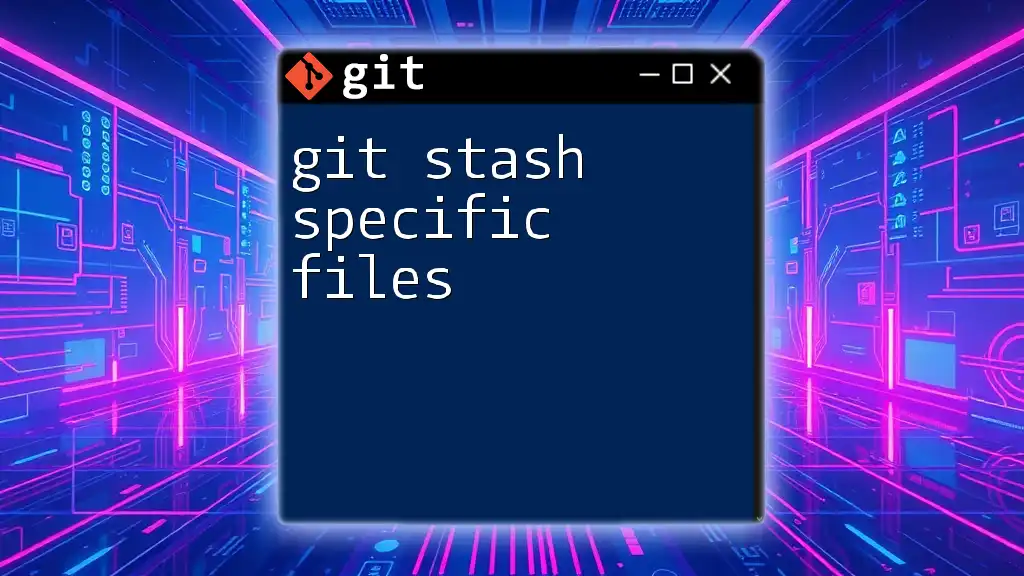
Conclusion
Including only specific files in your Git commits is essential for maintaining a manageable project history. By mastering the various techniques outlined here—from using the `git add` command to leveraging pathspecs and interactive staging—you can exercise greater control over your changes. Experiment with these commands in your own projects to see how they enhance your understanding and efficiency in using Git.
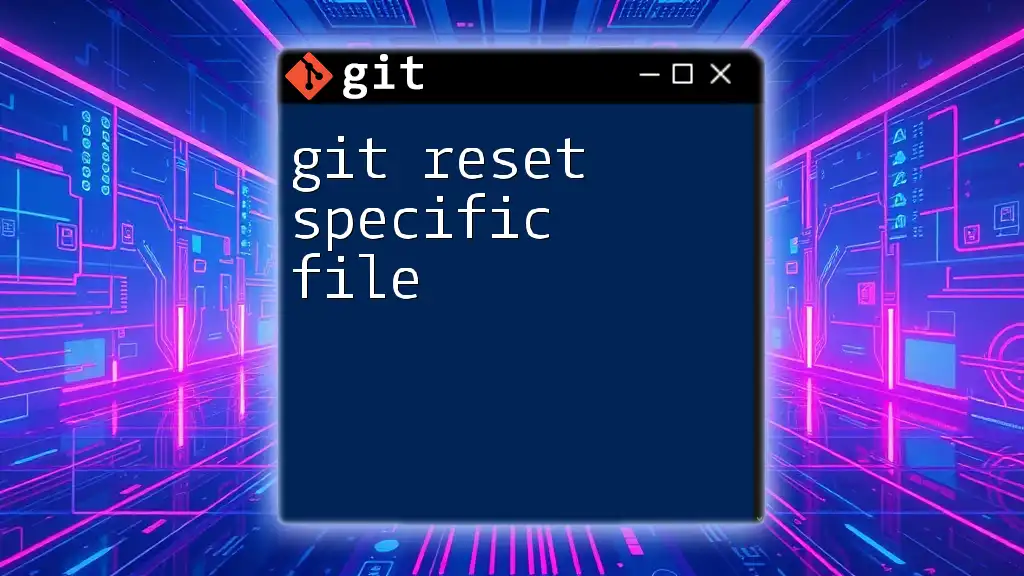
Additional Resources
For more detailed information and tutorials on Git, consider exploring the following resources:
- Git’s official documentation
- Online tutorials specific to Git commands
- Community forums and groups dedicated to version control and Git
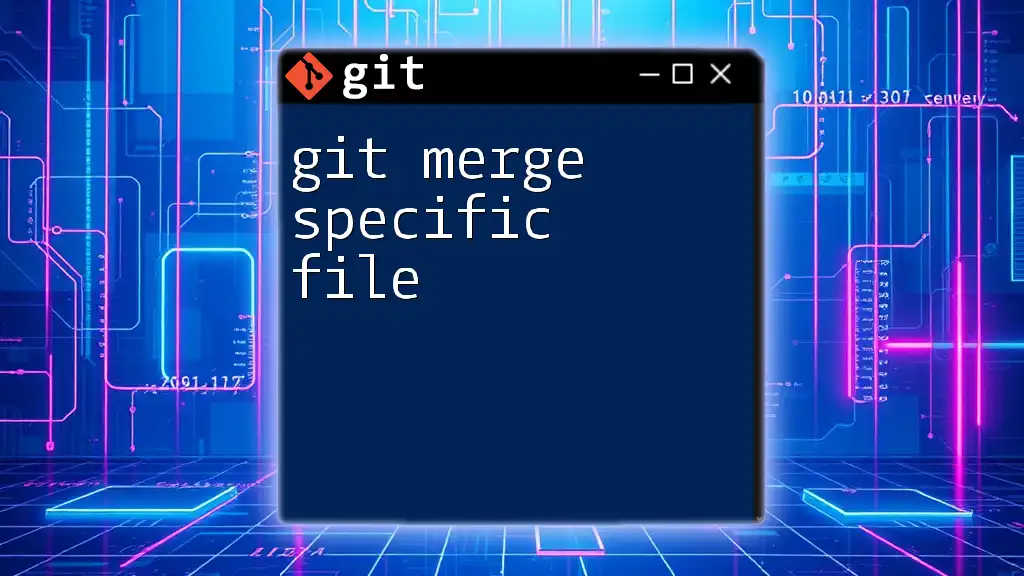
FAQs
What happens if I forget to stage files?
If you forget to stage files, any modifications made in the working directory will not be included in the next commit. This means that those changes will remain untracked, and you can either re-commit later or handle them in your next commit cycle.
How do I unstage files?
If you accidentally stage files you didn’t intend to include, you can unstage them with confidence by using:
git reset HEAD path/to/file.txt
This command removes the specified file from the staging area but keeps your changes intact in the working directory.
Can I include changes from other branches?
While you typically commit changes from the current branch, you can selectively include changes from other branches using cherry-picking or by merging files. This allows you to incorporate specific updates without merging the entire branch.

